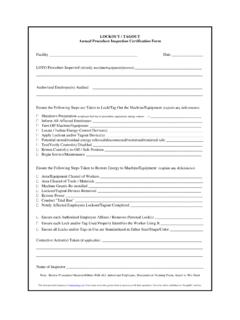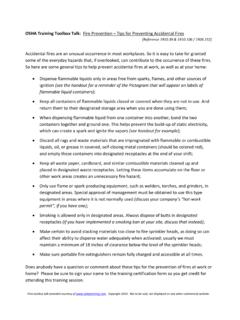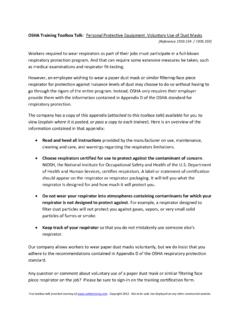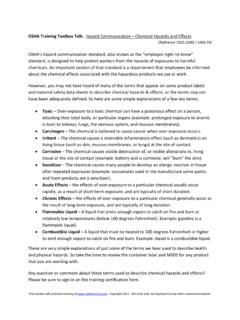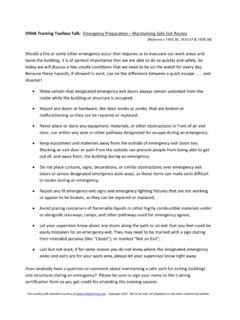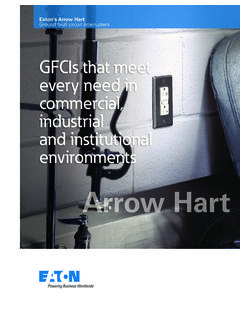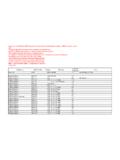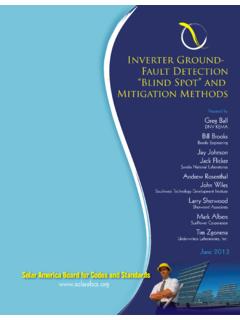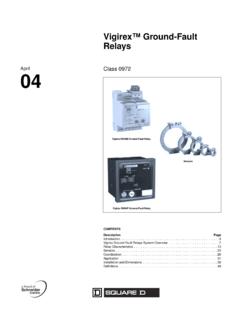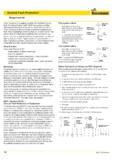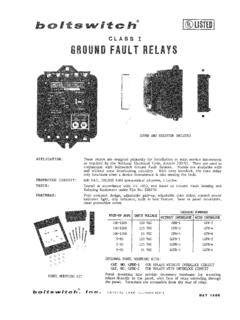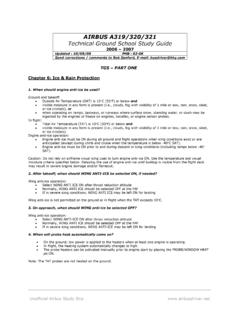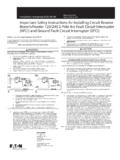Transcription of OSHA Training Toolbox Talk: Basic Electrical Safety ...
1 Free Toolbox talk provided courtesy of Copyright 2018. Not to be sold, altered, or displayed for profit on any commercial website. OSHA Training Toolbox Talk: Basic Electrical Safety Important Things to Know About GFCIs [Reference 1910 Subpart S / 1926 Subpart K] In previous Toolbox talks we discussed how tools and equipment which are grounded or double-insulated help prevent electrocutions as we perform our work. Today we will discuss an important Safety device that helps prevent electrocution when we are using Electrical tools or equipment near water or in wet environments; but it only works as long as it is properly installed and maintained. That device is a ground fault circuit interrupter, also commonly referred to as a GFCI.
2 When a tool is plugged into an Electrical receptacle, electricity flows from the receptacle to the tool through one of the Electrical conductors in the power cord; this conductor is usually referred to as the hot wire. When the trigger or switch on the tool is activated, the current then flows through the tool to make it run, and then returns to the receptacle via another conductor in the power cord; that one is referred to as the neutral wire. Ideally the same amount of current flows from the receptacle to the tool and then back to the receptacle - unless there is a short circuit, also called a ground fault. Electrical receptacles and breakers equipped with a ground fault circuit interrupter monitor the amount of current flowing through this path, and if it senses a drop in returning current of just a few thousandths of an amp, it almost instantaneously trips an internal breaker and stops power flowing from the receptacle.
3 You may find GFCI-protected receptacles or breaker switches installed on temporary power poles on construction sites, on many portable generators, and in areas of buildings or other structures where water may be present, such as in bathrooms, kitchens, mixing areas, garages, open sided shops, outdoor work areas, and on top of roofs. Also be aware that if one of the receptacles in a circuit containing multiple receptacles is GFCI protected, the GFCI will protect all the other receptacles wired behind it in the circuit, but not any that are wired in front of it in the circuit. You can usually distinguish a GFCI receptacle by its two buttons, typically marked TEST and RESET , placed in the center of the receptacle (see handout).
4 There are also GFCI breaker switches that can be installed inside of a breaker box which protects all receptacles in that circuit. There are also portable GFCI-equipped devices that can be plugged into an unprotected receptacle (see handout for examples of these devices) which protect equipment plugged into them. These breakers and portable devices also have the same two TEST and RESET buttons as a GFCI receptacle. Because GFCI devices do occasionally malfunction or wear out over time, it is vitally important that we test them at the beginning of each shift. This is typically done by depressing the TEST button on the receptacle or GFCI breaker; you should hear a faint click sound as the device trips. You can further confirm the receptacle was de-energized by plugging in a tool such as a drill to the receptacle and try to operate it by depressing the trigger; it should not run if the GFCI tripped as designed.
5 Once you confirm that a GFCI receptacle or breaker switch is functioning properly, firmly press the Reset button to re-energize the receptacle or circuit. And if any GFCI-protected device is not functioning properly, do not use it. Instead, mark it with a danger tag or similar manner to identify it is not to be used, and then immediately notify your supervisor so it can be repaired or replaced by a qualified electrician. Does anyone have a question about how to identify and test GFCI receptacles and breakers switches? Thank you for attending, and please sign your name on the Training certification form so you get credit for attending today s OSHA Training Toolbox talk. Free Toolbox talk provided courtesy of Copyright 2018.
6 Not to be sold, altered, or displayed for profit on any commercial website. ILLUSTRATIONS GFCI Receptacle GFCI Breaker Various Types of Portable GFCI Devices Free Toolbox talk provided courtesy of Copyright 2018. Not to be sold, altered, or displayed for profit on any commercial website. OSHA Safety Training CERTIFICATION FORM Toolbox Topic Covered: Basic Electrical Safety Important Things to Know About GFCIs Company Name: _____ Date: _____ Training led by: _____ PRINT NAME SIGNATURE _____ _____ _____ _____ _____ _____ _____ _____ _____ _____ _____ _____ _____ _____ _____ _____ _____ _____ _____ _____ _____ _____ _____ _____ _____ _____ _____ _____

